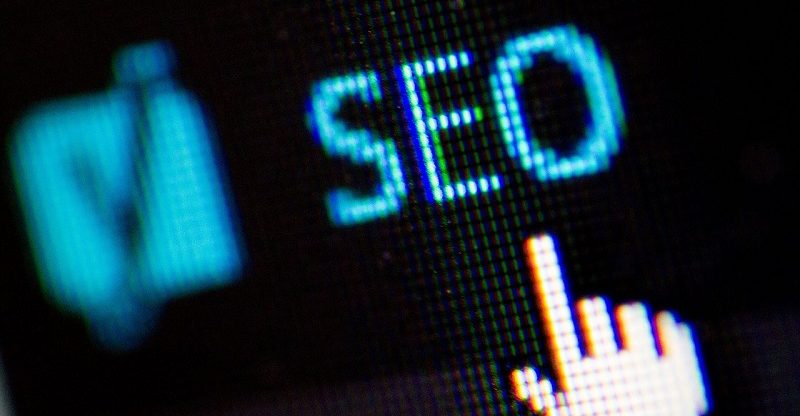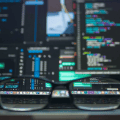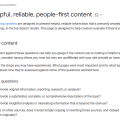In today’s competitive digital economy, visibility is everything. Whether you’re running a growing e-commerce site, a digital publishing powerhouse, or a tech-driven enterprise, your online presence is often your biggest business asset. But as your business scales, so do the challenges that come with optimizing for search engines.
Enter Enterprise SEO—the art and science of managing search engine optimization across large websites, multiple domains, and a complex digital infrastructure. It’s not just about ranking for keywords anymore; it’s about building a sustainable, scalable strategy that supports business goals, enhances user experience, and ensures your brand remains visible at every stage of the buyer’s journey.
Let’s explore the top enterprise SEO strategies that can help take your business to the next level.
Table of Contents
1. Establish SEO as a Company-Wide Priority
One of the biggest shifts in mindset when moving from traditional to enterprise-level SEO is understanding that SEO isn’t just a “marketing thing”—it’s a business-wide discipline.
From IT and content teams to design and development, everyone plays a role. Aligning departments ensures that SEO best practices are baked into every step of your digital workflow, from product launches to technical upgrades.
Actionable Tips:
- Involve SEO teams in product planning and site redesigns.
- Create internal documentation for on-page and technical SEO standards.
- Train cross-functional teams on SEO basics to avoid accidental damage (like no-index tags or broken redirects).

2. Conduct Deep Technical Audits—Regularly
Technical SEO is the backbone of enterprise optimization. The larger your site, the more opportunities there are for broken links, crawl errors, slow-loading pages, and inefficient URL structures.
A regular deep-dive technical audit can uncover performance issues that may be hindering your site’s rankings.
Audit Checklist Includes:
- Indexability and crawl budget optimization
- Mobile-first performance
- Site speed and Core Web Vitals
- XML sitemap and robots.txt validation
- Canonical tag consistency
- Structured data (schema) implementation
Tools like Screaming Frog, Sitebulb, and Google Search Console are your best friends here—but make sure you have the expertise to interpret what the data is telling you.
3. Embrace Scalable Content Strategies
Content is still king, but in enterprise SEO, it’s also a production line. You’re often dealing with hundreds or thousands of pages—from product listings to blog content and support documentation.
To scale efficiently, you need a smart content strategy built around:
- Topic clustering: Grouping content around core themes to build topical authority.
- Content templates: Standardized layouts for consistency across similar pages.
- AI-assisted content creation: Using generative tools to speed up first drafts (with human editing for quality assurance).
Don’t chase keywords blindly. Instead, prioritize intent—what your target audience is trying to solve or learn—and structure your content to meet those needs clearly and quickly.
4. Strengthen Your Internal Linking Structure
Think of your internal links as the GPS for search engines and users alike. A strong internal linking framework ensures:
- Smooth navigation
- Improved page authority distribution
- Better crawlability
When managed correctly, it also helps search engines understand the hierarchy of your website.
Best Practices:
- Use descriptive anchor text (not generic terms like “click here”).
- Link from high-authority pages to new or underperforming content.
- Maintain a shallow site architecture so key pages are accessible within three clicks from the homepage.
5. Automate Where Possible, But Keep a Human in the Loop
Automation is your secret weapon in managing large-scale SEO tasks. From automated reporting to dynamic meta tag generation, technology can help you stay agile.
But here’s the catch: automation without oversight can do more harm than good. That’s why it’s important to set up checks and balances, such as manual QA processes and team reviews for major updates.
Automate These Tasks:
- Rank tracking across thousands of keywords
- URL monitoring and redirect mapping
- Site health alerts for broken links or status code issues
Don’t Automate:
- Link-building outreach
- Content quality review
- User experience testing
6. Optimize for International and Multilingual SEO
If your business spans multiple countries or languages, international SEO is essential. This includes setting up:
- Correct hreflang tags for language targeting
- Country-specific subdomains or subfolders
- Localized keyword research (not just translation)
Also, consider cultural nuances in your messaging and visuals. What works in one region may fall flat—or even offend—in another.
7. Focus on Entity-Based SEO and Semantic Search
Google has moved well beyond just keywords. Its algorithm now prioritizes context, relationships, and meaning—this is called semantic search.
To stay ahead, optimize for entities, not just keywords. Think of entities as named things (brands, products, people, topics) that have relationships with each other.
For example:
- Use structured data (schema) to define content clearly.
- Maintain consistent NAP (Name, Address, Phone) across directories.
- Build out rich, knowledge-based content that answers real user questions.
This helps Google build a clearer picture of your brand and content, making it more likely to show up in featured snippets, People Also Ask boxes, and knowledge panels.
8. Maintain a Solid Backlink Strategy
Backlinks are still a critical ranking factor, especially at the enterprise level. But it’s no longer about quantity—it’s about quality, relevance, and authority.
Effective link-building for enterprises should be:
- Editorial: Earned through great content and industry thought leadership.
- Targeted: Focused on niche-specific publications or blogs.
- Ethical: Avoid link farms, paid placements, and shady practices that can trigger penalties.
A PR-driven approach, combined with link-worthy content like research studies or whitepapers, can elevate your backlink profile naturally over time.
9. Align SEO Metrics With Business KPIs
Don’t just report on rankings. Tie your SEO performance to meaningful business outcomes, such as:
- Organic revenue
- Conversion rates from organic traffic
- Cost savings from reduced paid search reliance
- SEO-influenced leads or sign-ups
This not only validates the ROI of SEO but also helps secure buy-in from leadership.
Use tools like Google Looker Studio or enterprise-level analytics platforms to visualize and report performance in ways stakeholders can understand.
10. Stay Agile and Monitor Trends
Finally, enterprise SEO isn’t a “set-it-and-forget-it” deal. The digital landscape is always evolving—so your strategy must evolve with it.
Keep up with:
- Google algorithm updates
- Changes in SERP layouts (like AI-generated answers or visual search)
- Competitor SEO tactics
- Industry trends in mobile, voice, and visual search
Regular experimentation, testing, and refinement are key to long-term success.
Final Thoughts
At its core, enterprise SEO is about building a scalable, sustainable, and results-driven strategy that grows with your business. It requires more coordination, more technology, and more foresight—but the payoff is exponential.
By aligning SEO with business goals, embracing automation smartly, and investing in quality content and technical health, you set your organization up for long-term visibility, authority, and trust online.
Whether you’re just crossing into enterprise territory or looking to refine your current strategy, start with the fundamentals above—and evolve from there. The digital space may be crowded, but with the right SEO framework, there’s still plenty of room to rise.
























